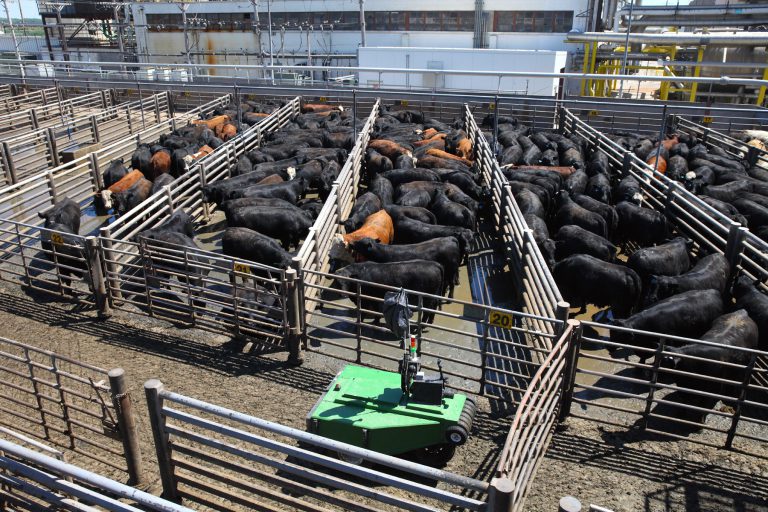Brad Churchill, a slaughter operations manager at Cargill Meat Solutions, has worked in the cattle industry for more than 30 years. He’s seen many employees injured by cattle.
“A young man did nothing to provoke this 1,600-pound angus steer who turned on him in an instant,” Churchill said of one incident last year. The man crawled through an escape hatch and only had a dislocated shoulder and few fractured ribs.
Working with cattle is dangerous: Data from the Bureau of Labor Statistics shows that in 2017, there were 1360 cases of workers injured by cattle. And those attacks can at times be fatal.
So, when Churchill first saw a video of a robot, developed by a Russian tech company for security purposes, it gave him an idea.
“Once we tested it and knew that we could move cattle with it, then I knew that we could keep our people out of the line of fire with these animals,” he said.
Cargill redesigned the robot with a tough metal exterior and it can be customized depending on the needs of the operation. For instance, an MP3 player relays recordings of whistles to help drive the animals forward, much like a human would do. For dairy operations, where the cows tend to be older, Churchill said an air blower could be installed to gently tickle their haunches.
Robotics are becoming increasingly common in dairy and feedlot operations, said David Douphrate, an expert in agricultural worker safety at the University of Texas Health Science Center. That’s in part because the work is dangerous and finding workers to fill jobs is challenging.
“I think that we will see more adoption of robotic technology in livestock production, it all comes down to cost and benefit,” he said. According to Cargill, the robotic cattle driver costs up to $50,000.
Douphrate thinks the concept is promising. Because the robot is operated remotely, workers no longer have to walk behind the animals were they’re vulnerable to kicks and unprovoked attacks.
“Anytime that you can eliminate, or even substitute, that task with modern technology, it’s a good thing,” he said.
Churchill said he thinks the robot might be used for moving other animals, including turkeys and hogs, though no such testing has taken place at Cargill yet.
Improving worker safety has became the focus of Churchill’s work, he said, which is why he’s made the technology available to others in the industry, even competitors. International meat producer JBS told Harvest Public Media in an email that they had not been contacted by Cargill.
Follow Esther on Twitter: @estherhonig

